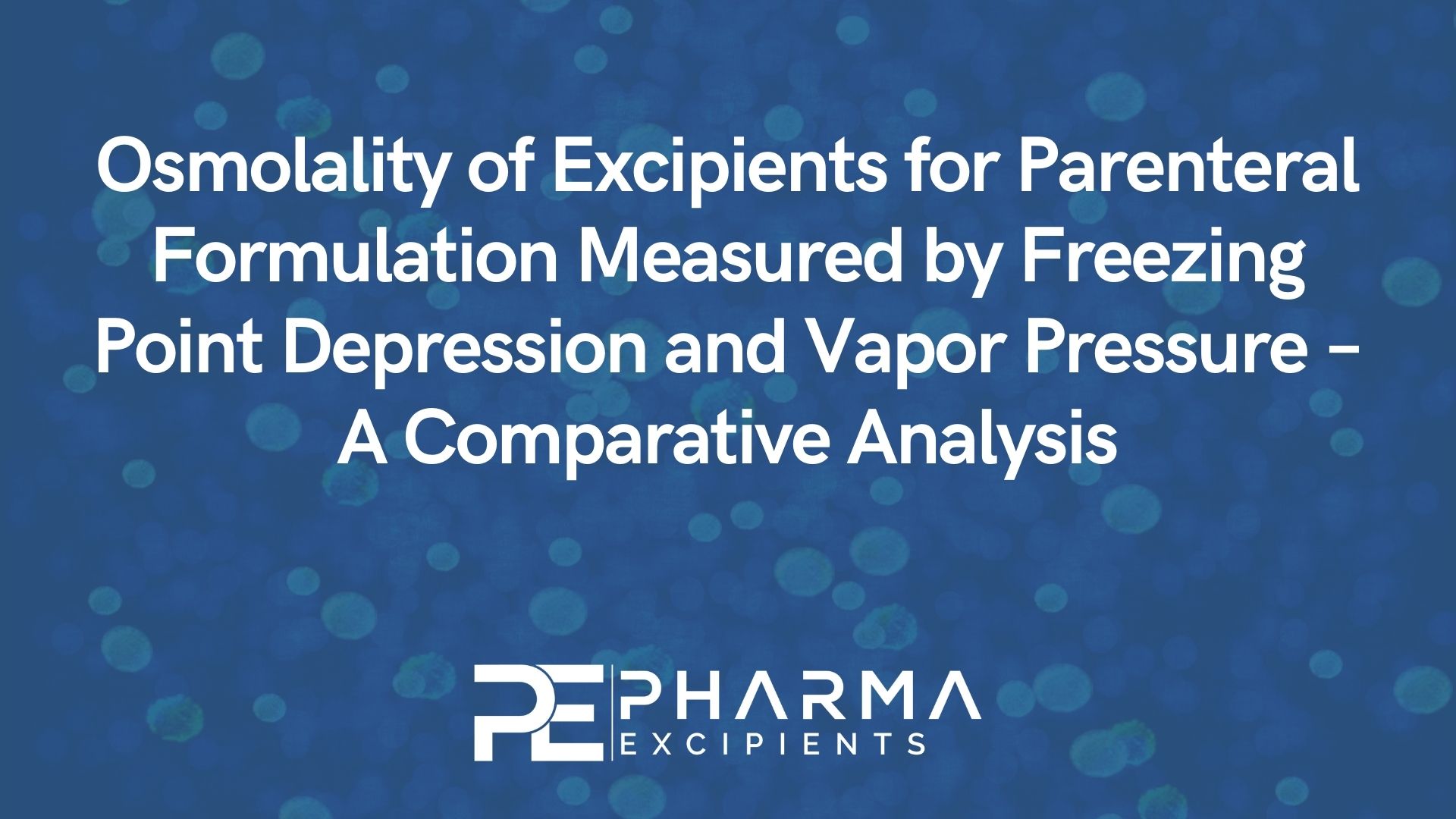Osmolality of Excipients for Parenteral Formulation Measured by Freezing Point Depression and Vapor Pressure – A Comparative Analysis

Purpose
To investigate the difference in methods to determine the osmolality in solutions of stabilizers used for long-acting injectable suspensions.
Methods
The osmolality was measured by freezing point depression and vapor pressure for 11 different polymers and surfactants (PEG 3350, 4000, 6000, 8000, 20,000, PVP K12, K17 and K30, poloxamer 188, 388 and 407, HPMC E5, Na-CMC, polysorbate 20 and 80, vitamin E-TPGS, phospholipid, DOSS and SDS) in different concentrations.
Results
Independently of the measuring method, an increase in osmolality with increasing concentration was observed for all polymers and surfactants, as would be expected due to the physicochemical origin of the osmolality. No correlation was found between the molecular weight of the polymers and the measured osmolality. The osmolality values were different for PVPs, PEGs, and Na-CMC using the two different measurement methods. The values obtained by the freezing point depression method tended to be similar or higher than the ones provided by vapor pressure, overall showing a significant difference in the osmolality measured by the two investigated methods.
Conclusions
For lower osmolality values (e.g. surfactants), the choice of the measuring method was not critical, both the freezing point depression and vapor pressure could be used. However, when the formulations contained higher concentrations of excipients and/or thermosensitive excipients, the data suggests that the vapor pressure method would be more suited.
Hugo Silva, M., Hudson, S.P., Tajber, L. et al. Osmolality of Excipients for Parenteral Formulation Measured by Freezing Point Depression and Vapor Pressure – A Comparative Analysis. Pharm Res (2022). https://doi.org/10.1007/s11095-022-03262-6

